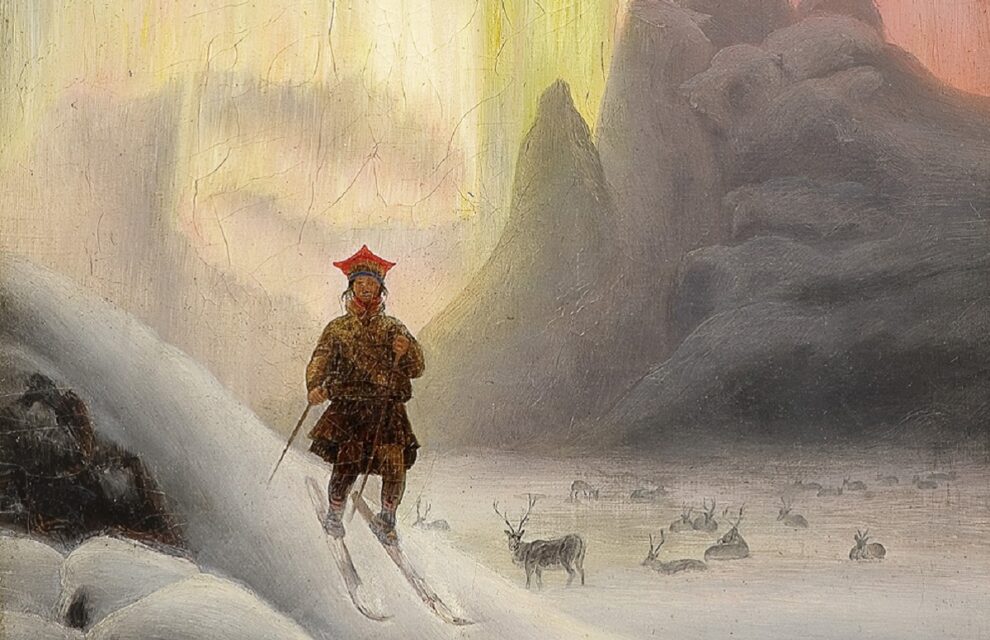I have written a few blogs recently about the way Norwegian polar explorer Roald Amundsen spent two years doing an apprenticeship with Canadian Inuit, to learn from their knowledge system.
But it is also true that Amundsen brought to the task of polar exploration a tremendous body of Norwegian polar knowledge.
The combination of these two knowledge systems led him to success.
Skiing has a long prehistory in Scandinavia and northern Russia, as petroglyphs in Karelia attest, which may go back to about 4000 BC. It is possible skiing has an even longer prehistory in China.
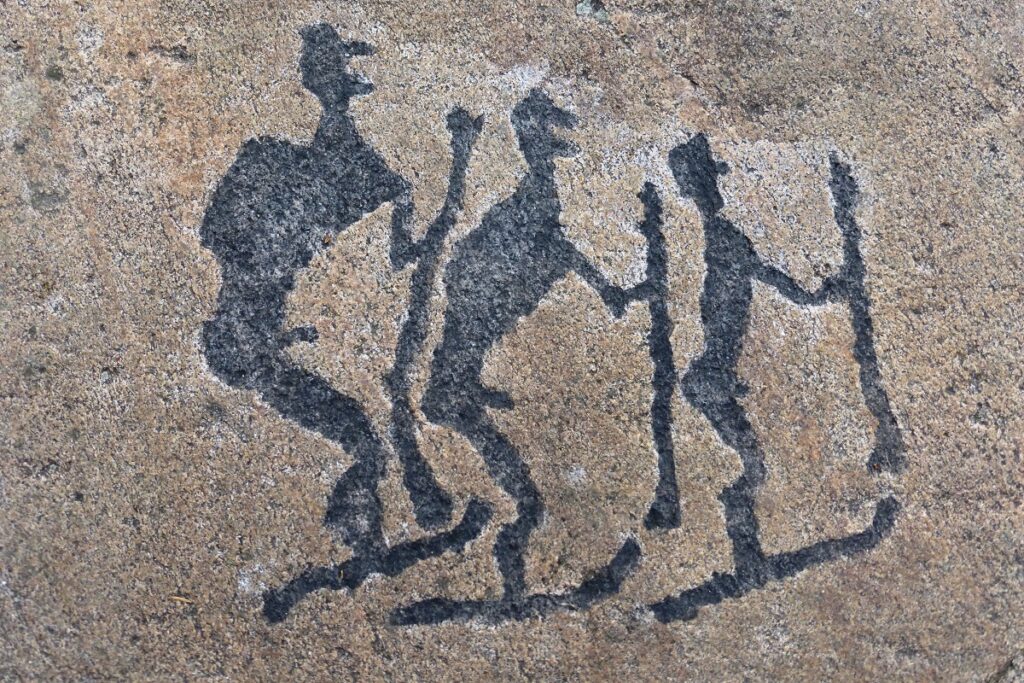
Skiing is mentioned in Konungs skuggsjá or the The King’s Mirror, written circa 1247 AD, a fascinating work which describes the Earth as a sphere, and offers many insights into Scandinavian culture and technique: “But it would seem a greater marvel to hear about men who are able to tame trees and boards, so that by fastening boards seven or eight ells long under his feet, a man is made able to pass the bird on the wing, or the fleetest greyhound that runs in the race, or the reindeer which leaps twice as fast as the hart.”
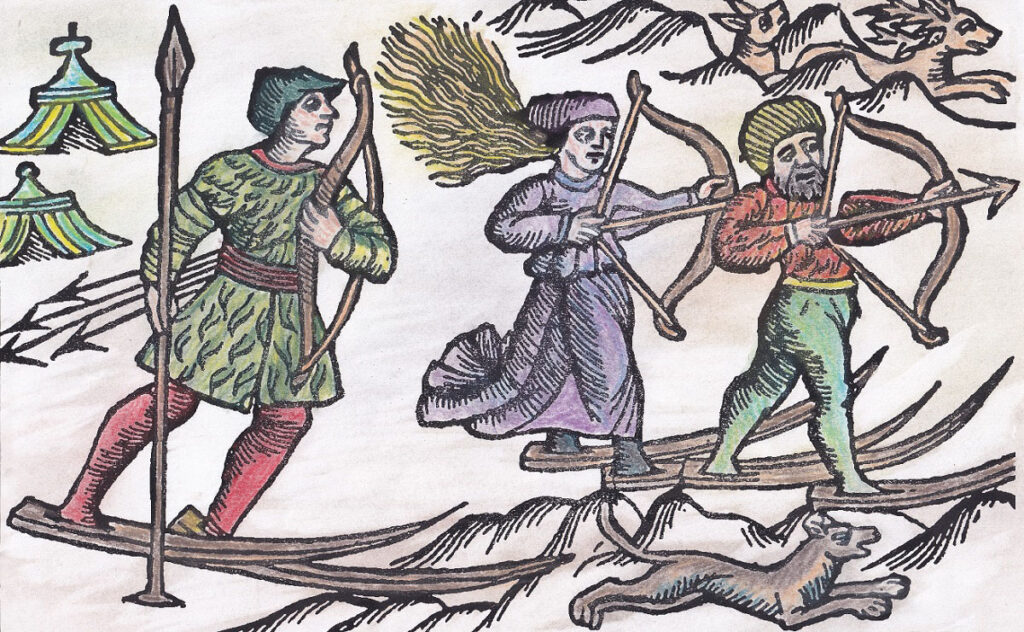
A wood carving in the 16th-century masterpiece, A Description of the Northern Peoples, by the Swedish Catholic archbishop-in-exile Olaus Magnus, shows three skiers, two men and a woman, pursuing wild game with bows and arrows.
Starting in the late 19th century, Norwegian polar explorer Fridtjof Nansen is often credited with being the first to combine skiing with the use of sledge-dogs. This is not altogether accurate, however. It would be more accurate to say he borrowed, revived or popularized an existing Aboriginal tradition from Siberia.
Actually, Norwegian polar explorers like Nansen and Amundsen had access to Aboriginal knowledge from the Sami of Scandinavia, and also from the Aboriginal peoples of Siberia. It was for this reason that Nansen chose two Sami to accompany him on his ski-trek across the Greenland ice sheet in 1888.
My researches for The Blinding Sea turned up an interesting engraving from Charles Theodore Middleton’s A New and Complete System of Geography, published in 1777-1778.
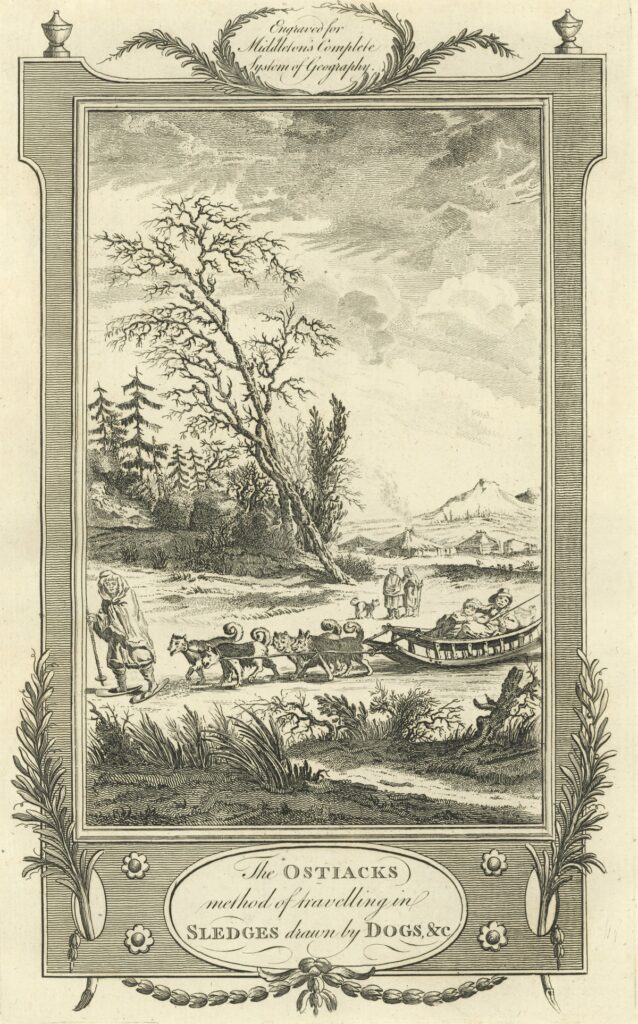
The engraving clearly shows a member of the Ostiak people, now known as Khanty, an Aboriginal people in Western Siberia. It is interesting to see skis depicted in a British work published in the late 18th century. The skis don’t much resemble our skis nowadays. In fact they look like Cree-Ojibwe snowshoes with curved, up-pointed toes, made entirely of wood. But the combination of skiing and sledge dogs in this engraving is unmistakable.
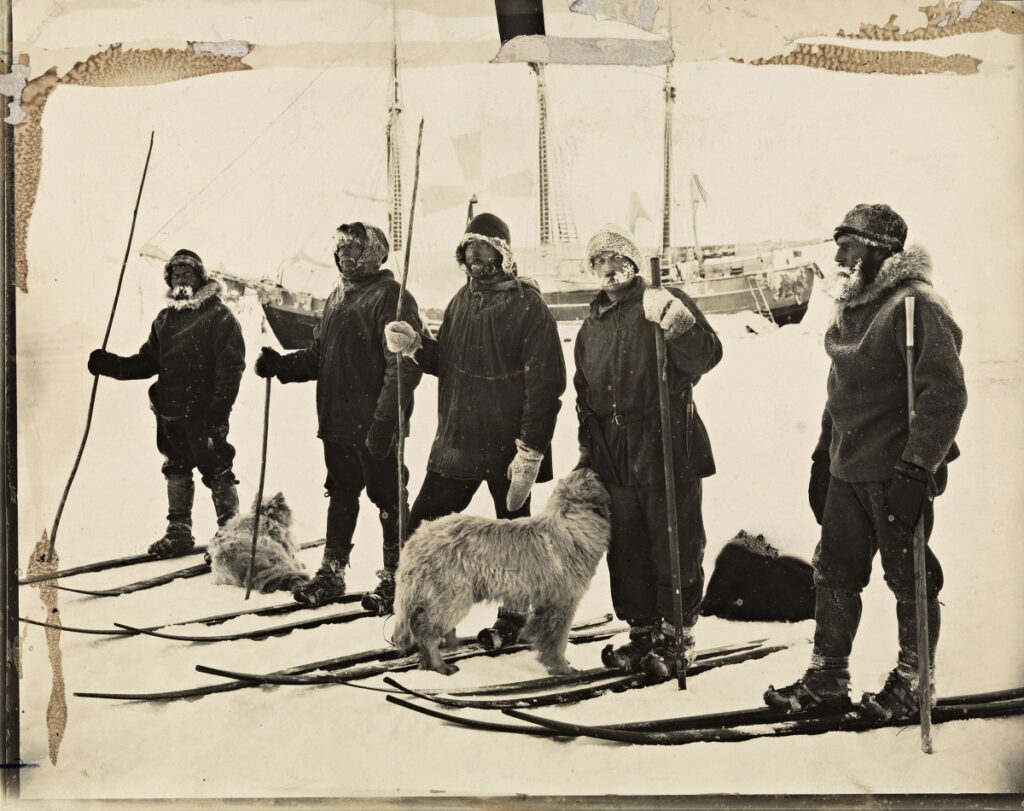
At the time of Nansen and Amundsen, few people in Canada were familiar with skis. Canada is a major skiing country nowadays. I like this postcard from 1908, showing a Canadian woman having some help fastening her ski harness:
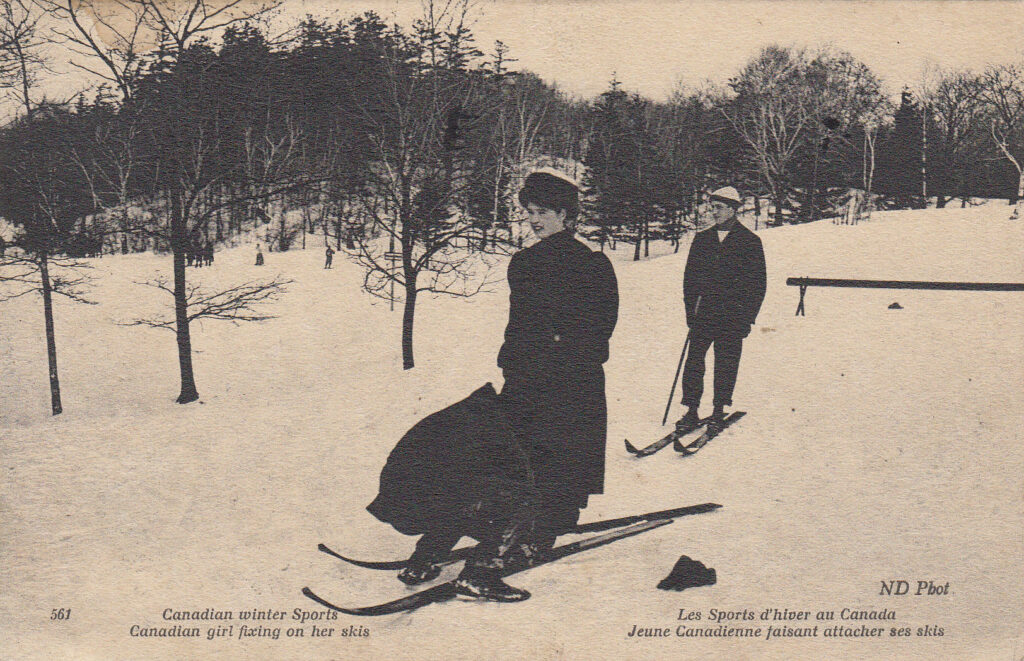
The feature image at this top of this blog shows a detail from a painting from 1885 by Frants Bøe, showing a Sami on skis under the Northern Lights.

